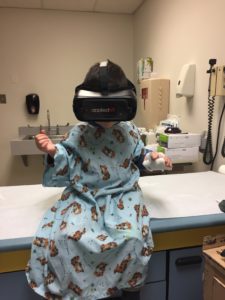 Research conducted by the Centers for Disease Control and Prevention (CDC) estimates that 1 in 6 boys and 1 in 4 girls are sexually abused before the age of 18. One of the most effective ways to prevent abuse from occurring is through education.
Research conducted by the Centers for Disease Control and Prevention (CDC) estimates that 1 in 6 boys and 1 in 4 girls are sexually abused before the age of 18. One of the most effective ways to prevent abuse from occurring is through education.
Sexual abuse is a sensitive but much-needed discussion that parents should have with their children. Experts suggest that this discussion should begin with children at a young age as part of conversations about safety, and talks about sexual abuse should be ongoing throughout a child’s development.
Lessons about sexual abuse can be introduced by first teaching children about their bodies. Teach them the proper names for the parts of their bodies, and also inform them that some areas are private and should not be touched or looked at by others. Other important lessons that should be included in your talks are:
- Secrets are not okay- According to the Rape, Abuse and Incest National Network (RAINN), “Perpetrators will often use secret-keeping to manipulate children.” Let your child know that they should not keep secrets and that they can speak to you about anything. Providing an environment of openness and patience will help them to feel secure.
- Do not accept bribes- People who sexually abuse children sometimes use bribery to keep them from telling. Teach your child not to accept gifts from adults without your permission.
- It is okay to say “no”- Teach your child it is okay to say no when touched in a way that makes them uncomfortable or if touched in private areas. Respect your child’s decision to say “no.” Do not force them to give hugs or sit in the laps of adults if they refuse to.
Although the topic of sexual abuse is often dreaded by parents, it must be done in order to protect children from harmful situations. Parents should not risk abuse because of their own discomfort.
If you are uncomfortable about speaking about this topic, experts recommend reading books with your child to build a bridge of communication. Your pediatrician can also be a helpful resource, they may recommend child health professionals or organizations that can provide you with the support you need.
All content of this newsletter is intended for general information purposes only and is not intended or implied to be a substitute for professional medical advice, diagnosis or treatment. Please consult a medical professional before adopting any of the suggestions on this page. You must never disregard professional medical advice or delay seeking medical treatment based upon any content of this newsletter. PROMPTLY CONSULT YOUR PHYSICIAN OR CALL 911 IF YOU BELIEVE YOU HAVE A MEDICAL EMERGENCY.









